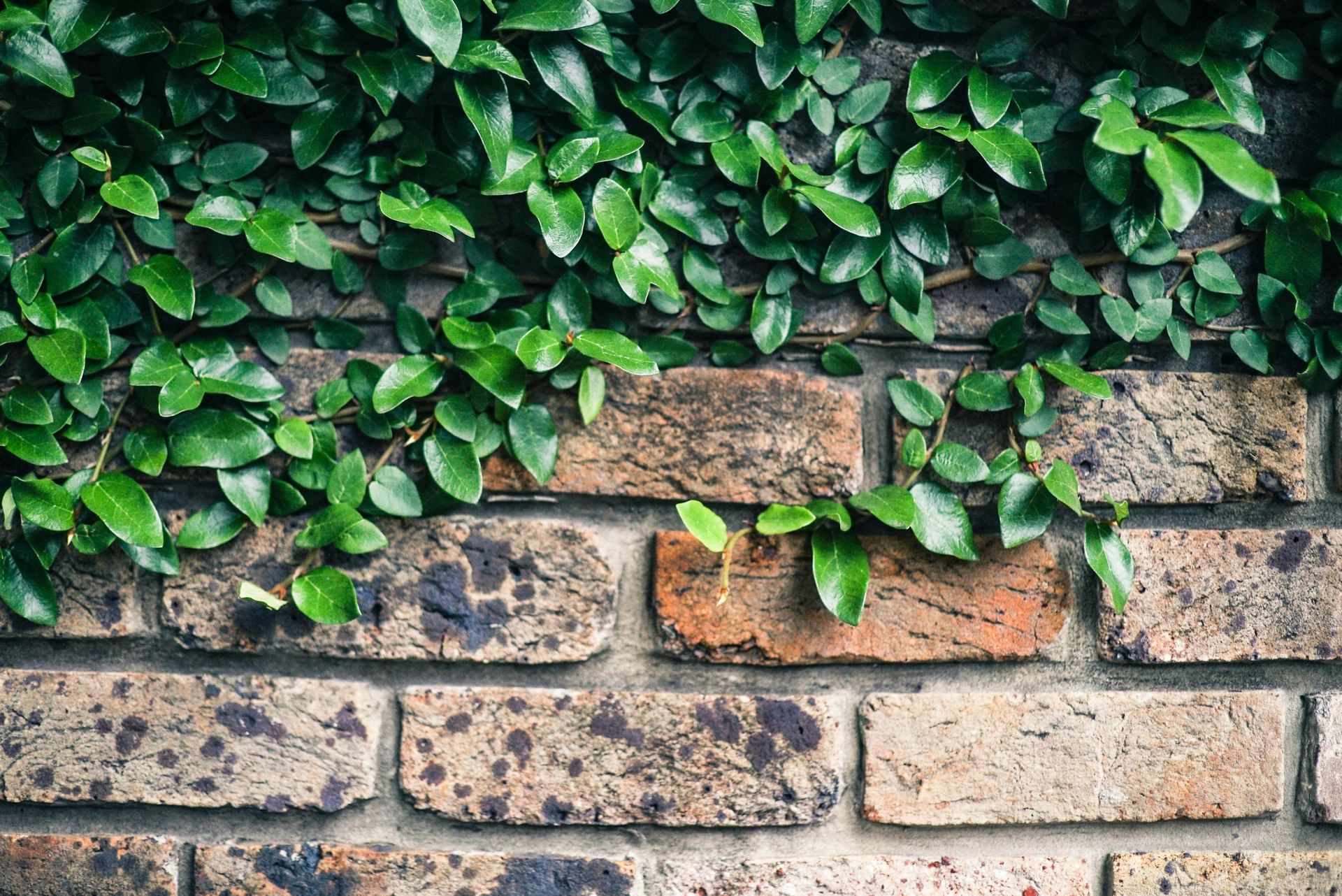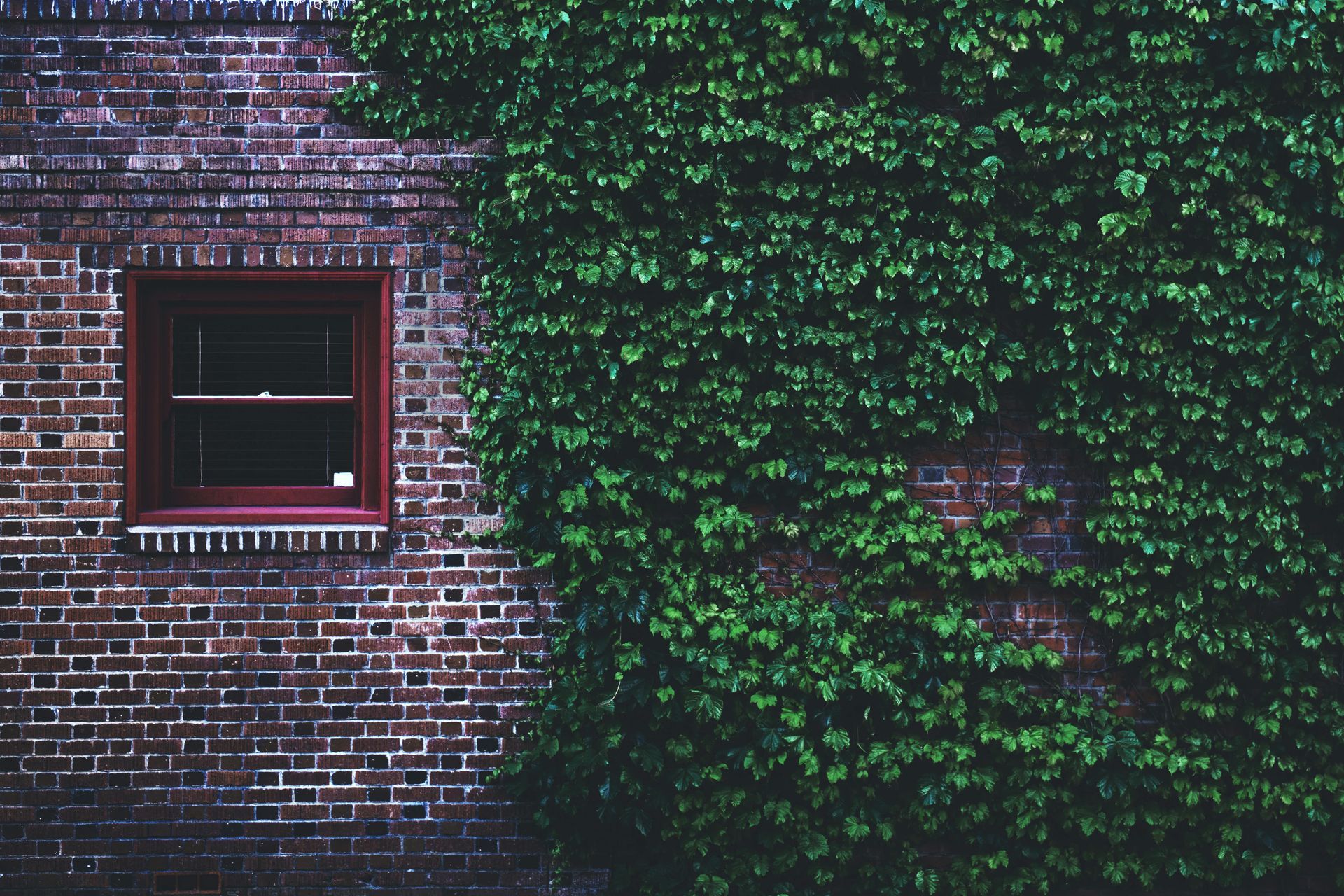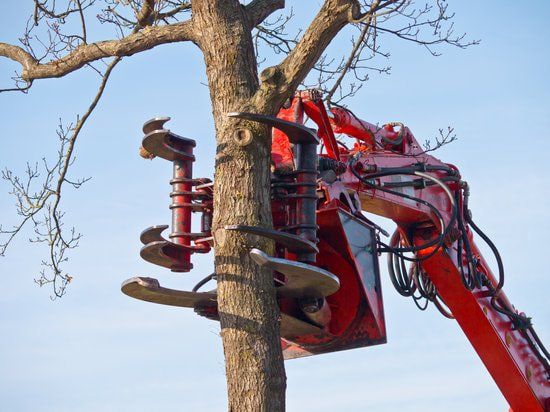Glasgow Trees
Ivy Removal Service
Ivy Removal Glasgow - Specialist Ivy Removal Services
Glasgow Trees provide specialist ivy removal services in Glasgow and all surrounding areas. Our experienced staff are trained to safely and effectively remove any type of ivy, from English Ivy to the most invasive species. We use a combination of mechanical cutting, hand-pulling and chemical treatments to ensure all aspects of the plant are removed. Additionally, we work quickly and efficiently to minimise disruption to your home or business.
We understand that ivy removal can be a stressful and time-consuming process, so we strive to make it as easy as possible for our customers. With our knowledge and experience, you can rest assured that your ivy problems will soon be a thing of the past. So if you’re in Glasgow or surrounding area and need help with an ivy problem, don’t hesitate to get in touch with us. We’re here to help!
Our ivy removal service also extends beyond Glasgow, with our team of tree surgeon specialists able to tackle any problem throughout Scotland. So whether you have a large-scale infestation or just a few troublesome vines, we can help.
Our years of experience in dealing with ivy mean that no job is too big or small for us to handle. Drop us a message on our contact form, or call us direct on our main telephone number, and we’ll be happy to discuss the best course of action for your particular situation. We look forward to hearing from you!
At our company, customer satisfaction is always our top priority. Our team are dedicated to providing a professional, friendly service that leaves you with the peace of mind that your ivy problem has been properly dealt with and fully eradicated. We also offer free consultations, so you can get an expert opinion on the best way to tackle your ivy issue without having to pay a penny. So if you need fast, effective and affordable ivy removal in Glasgow or anywhere else in Scotland, don’t hesitate to get in touch with us today.
• Our Ivy Removal Services provide quick and efficient removal of ivy from buildings, trees, and other structures.
• We use a combination of manual and mechanical techniques to safely remove ivy in minimal time.
• Our certified professionals are experienced in the proper removal of ivy, ensuring that no damage is done to what it is covering.
• We quickly dispose of all removed ivy in an environmentally-friendly manner.
Understanding Ivy and Its Impactarding Care

What is Ivy?
Ivy is a common climbing plant that can be found in many gardens and on buildings throughout Glasgow. The most prevalent types include English Ivy (Hedera helix) and Irish Ivy (Hedera hibernica). These plants are known for their ability to cling to almost any surface, making them a popular choice for adding greenery to walls and fences. However, their vigorous growth can lead to several problems if not managed properly.
Ivy has a unique growth pattern, with aerial roots that allow it to attach to and climb surfaces. This characteristic, while useful for covering unsightly walls, can also cause significant damage to structures and trees. It's important to understand the nature of ivy to appreciate the necessity of professional removal services.

Why Ivy Can Be Problematic
While ivy might look charming, it can be detrimental to buildings and plants. Its roots can penetrate cracks in masonry, causing structural damage over time. This can lead to costly repairs and even compromise the safety of the building. Additionally, ivy can suffocate trees by wrapping tightly around their trunks, restricting their growth and reducing their overall health.
Moreover, ivy can harbour pests and diseases that may spread to other plants in your garden. It can also create a damp environment that encourages the growth of mould and mildew, posing health risks to residents. Understanding these potential issues highlights the importance of regular ivy management and removal.
Benefits of Professional Ivy Removal
Expertise and Experience:
Hiring professionals for ivy removal ensures the job is done safely and effectively. Our team at Glasgow Trees is highly trained and experienced in dealing with all types of ivy infestations. We use the latest techniques and equipment to remove ivy without causing damage to your property.
Our certified arborists understand the complexities of ivy growth and the best methods to eradicate it. We conduct thorough assessments to determine the most appropriate removal strategy for each unique situation. This expertise ensures that the ivy is removed efficiently and that the underlying issues are addressed to prevent future growth.
Efficiency and Safety:
Professional ivy removal is not only more efficient but also safer than attempting to do it yourself. Ivy can grow in hard-to-reach places, making it difficult and dangerous to remove without the proper tools and knowledge. Our team uses specialised equipment to access and remove ivy from even the most challenging locations.
Safety is our top priority. We follow strict protocols to ensure that the removal process does not harm your property or the surrounding environment. By choosing professional services, you can have peace of mind knowing that the job will be done right, without any risks to your safety or property.
Long-term Solutions:
Removing ivy is not just about eliminating the visible growth. It’s crucial to address the root causes to prevent it from returning. Our comprehensive ivy removal service includes preventive measures to keep your property ivy-free in the long run. We provide advice on maintaining your garden and buildings to discourage future ivy growth.
We also offer regular maintenance services to ensure that any new ivy growth is promptly dealt with. This proactive approach helps to maintain the health and beauty of your property, saving you time and money on future removal efforts.
Our Ivy Removal Process
Initial Assessment:
The first step in our ivy removal process is a detailed inspection of your property. Our experts will assess the extent of the ivy infestation, identify any potential structural damage, and determine the best course of action. This initial assessment allows us to create a customised removal plan tailored to your specific needs.
During the assessment, we also consider factors such as the type of ivy, its location, and the surrounding environment. This thorough evaluation ensures that our removal strategy is both effective and minimally invasive, preserving the integrity of your property.
Removal Techniques:
We employ a variety of techniques to remove ivy, depending on the situation. For smaller infestations, manual removal is often the best option. This involves carefully cutting and pulling the ivy away from surfaces, ensuring that the roots are fully removed to prevent regrowth. For larger or more stubborn infestations, we may use eco-friendly herbicides that effectively kill the ivy without harming the surrounding plants or soil.
In cases where ivy has grown in hard-to-reach areas, we utilise specialised equipment to ensure complete removal. Our team is trained to handle these tools safely and efficiently, ensuring that all traces of ivy are eradicated from your property.
Post-Removal Care:
Once the ivy has been removed, we ensure that your property is left clean and tidy. This includes the proper disposal of all ivy debris and any other waste generated during the removal process. We also provide recommendations for post-removal care to help maintain the condition of your property.
Our team can offer advice on replanting and landscaping to fill the spaces left by the removed ivy. This helps to restore the aesthetic appeal of your garden and prevents any new ivy from taking hold.
Contact Us Today on
For Free Quotation and Expert Advice
Frequently Asked Questions About Ivy and It's Removal
What problems does common ivy cause?
Common ivy is an invasive plant species that can cause a variety of problems for both humans and the environment. It is hard to control and it can become a nuisance when it grows out of control, climbing and smothering trees, buildings, gardens, and even power lines. The roots of common ivy are very strong and can damage brickwork and mortar as they grow, weakening the structure of buildings. It can also block drains and gutters, leading to water damage or flooding in areas that are vulnerable to such issues. In natural environments, common ivy can spread quickly and displace native species of plants as it grows. This in turn affects local wildlife, upsetting the balance of the ecosystem and depriving animals of their natural habitats. All of these problems must be taken into consideration when dealing with common ivy, as well as the potential for the spread of allergic reactions and respiratory illnesses caused by the plant's sap. Without proper management, common ivy can become a nuisance that is difficult to eradicate. Therefore, it is important to take proactive measures in order to reduce its spread and manage any existing growth.
One of the most effective ways to manage common ivy is through regular monitoring and pruning. Monitoring can help identify any existing growth and allow for timely intervention. Pruning can help control growth, prevent it from climbing too high or out of bounds, and reduce the risk of damage to property. Keeping areas clear around buildings and other structures will also make it more difficult for the ivy to spread. Chemical treatments are also available, although these should be used with caution and only when absolutely necessary. Finally, an integrated approach that combines all of these methods is often the most effective way to manage common ivy. This method helps ensure that the plant is kept under control and any existing growth is managed in a safe and efficient manner.
In addition to these management techniques, it is also important to be aware of the legal requirements when dealing with common ivy. In some areas, it may be illegal to remove or otherwise disturb the plant without permission from the authorities. It is therefore necessary to familiarise oneself with local laws and regulations in order to ensure that any control methods are done legally and safely. By taking the necessary steps to properly manage common ivy, it is possible to reduce its spread and minimise any potential problems it may cause in the environment.
Common ivy can be an attractive plant when kept under control, providing a green backdrop for gardens or outdoor areas. It should still be monitored regularly however, as unchecked growth can quickly become a nuisance. With the right knowledge and techniques, it is possible to keep common ivy under control and prevent it from becoming an unmanageable problem.
When dealing with common ivy, prevention of spread is always preferable to management. Encouraging native plants that are less invasive in gardens and outdoor areas can help reduce the presence of non-native species like common ivy. Regular maintenance also helps to ensure that any existing growth is kept in check and does not get out of control. These methods can help keep common ivy from becoming a problem, allowing it to be enjoyed for its beauty without causing any negative impacts on the environment or human health.
In summary, common ivy can cause a variety of problems if it is not managed properly. It is important to take proactive steps to prevent its spread and identify any existing growth in order to control it effectively. A combination of pruning, monitoring, chemical treatments, and legal considerations must be taken into account when dealing with this plant. When done correctly, common ivy can be an attractive addition to any outdoor area without becoming a nuisance or causing any damage.
How much does ivy removal cost?
The cost of ivy removal can vary depending on the extent of the infestation and the complexity of the removal process. We offer free quotes to give you a clear idea of the expected costs. Our pricing is competitive and transparent, with no hidden fees.
How long does the removal process take?
The duration of the removal process depends on the size and severity of the ivy infestation. For smaller areas, it may take just a few hours, while larger or more complex cases could take several days. During our initial assessment, we provide an estimated timeline to ensure you know what to expect.
How deep are ivy roots?
Ivy roots can grow up to 10 feet deep, depending on the type of ivy and the soil conditions. Some species of ivy may even penetrate underground pipes or foundations if not properly managed. Ivy is a strong climber that wraps itself around surfaces using its aerial rootlets, making it difficult to completely remove without killing the plant. Proper pruning and training is
key to keeping ivy in check and preventing it from growing out of control.
Additionally, ivy should be planted away from walls or other structures, as the roots can damage them if they become too large. For best results, periodically trim back any overgrown vines and pull up rootlets that have climbed higher than desired. With proper care and maintenance, ivy can make a beautiful addition to any landscape but can quickly get out of hand and become a menace!
What is the lifespan of ivy?
Ivy plants can live for many years, with some species even living over 100 years. Generally speaking, when cared for properly, ivy plants can thrive both indoors and outdoors. While ivy is adaptable to most environments, it does prefer a cooler climate and moist soil. When planted outdoors in favourable conditions, ivy may spread rapidly by sending out runners that take root in the soil and grow into new plants. In addition to its long lifespan, ivy is known for being a hardy plant that can easily withstand varying weather conditions such as hot sun or cold rain. With proper care, an ivy plant can remain healthy for many years and continue to look lush and vibrant. Ivy is also known for being an air purifier, helping to reduce indoor air pollution. It is also said to attract butterflies and other beneficial insects into gardens.
Can a Neighbour grow ivy on my house?
Ultimately, the decision to allow a neighbour to grow ivy on your house is up to you. It may depend on factors such as what type of ivy it is, how much space it will take up, and the amount of maintenance required. If you decide that you don't want your neighbour to grow ivy on your house, then you should communicate this to them clearly.
When considering ivy growth on your house, it's important to consider the potential effects that it can have on your property. If it is not properly managed, ivy can damage paint and brickwork by trapping moisture against the surface of the house. It can also block windows and gutters, causing water damage if left unaddressed. Additionally, ivy can be difficult to remove once it has taken root.
If you're still unsure if you should allow your neighbour to grow ivy your house, it may helpful to consult a professional who can assess the potential risks and give advice tailored to your situation. This way, you'll have all of the information that you need before making your decision.
Regardless of what you decide, it's important to remember that a neighbour relationship is built on mutual respect and understanding. If you are not comfortable with the suggestion, be sure to let your neighbour know while still being respectful and mature. After all, maintaining a good relationship with your neighbours is essential for living in harmony.
What happens to the removed ivy?
All removed ivy is properly disposed of in an environmentally friendly manner. We adhere to local regulations for green waste disposal, ensuring that the ivy does not contribute to landfill waste. In some cases, the ivy can be composted to benefit your garden.
Call Glasgow Trees now to book our specialist Ivy removal services
Glasgow Trees, keeping things local.

CONTACT
Glasgow Trees Clyde Offices 2nd Floor
48 West George Street
Glasgow G2 1BP, Scotland, UK.
Email: glasgowtrees@gmail.com
Tel:
0141-483-7485
QUICK LINKS
QUICK LINKS
Copyright © 2024 Glasgow Trees


